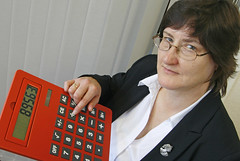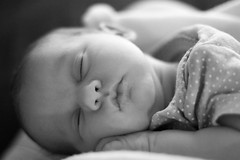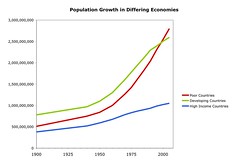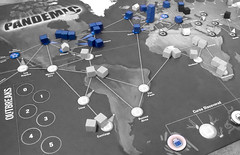| 6646726890 | Mean | The average in a set of numbers | | 0 |
| 6646726891 | Median | The middle number in a set of numbers | | 1 |
| 6646726892 | Mode | Most frequently re-occuring number in a set of numbers | | 2 |
| 6646726893 | Standard Deviation | Used to show and measure the variation in data | | 3 |
| 6646726894 | Histograms/Bar Graphs | A graph that shows the frequency between two things |  | 4 |
| 6646726895 | Operationalization | The process of defining a measurement that isn't necessarily measurable | | 5 |
| 6646726896 | Theory | A list of ideas that are used to explain predictions and to make predictions | | 6 |
| 6646726897 | Hypothesis | An educated guess on what the outcome will be that supports the theory | | 7 |
| 6646726898 | Research | The actual collection of the data being tested. The test of the hypothesis | | 8 |
| 6646726899 | Descriptive Research | Used to describe behavior and characteristics of the population. Usually Naturalistic Observation, Case Studies, and Surveys | | 9 |
| 6646726900 | Longitudinal studies | Take long periods of time, hence "long". Used to show the changes in a person over a long period of time. These take a long time, they're expensive, and because of the long amount of time, you may lose participants (death) which makes it all a waste | | 10 |
| 6646726901 | Cross-sectional studies | Observe and classify the changes in different types of people and different groups at the same time. This is sometimes at a disadvantage because unidentified variables can get involved | | 11 |
| 6646726902 | Naturalistic observation | The process of observing and classifying, not explaining, behavior of people in a natural setting (at home, parks, a mall). The people are being observed without interference between the observer and the one being observed. The bad thing about it is observer bias, it's time consuming, and you don't have control over the environment. | | 12 |
| 6646726903 | Observer Bias | When the researcher them self alters or changes the results of the study. For example, a teacher studying differences in math skills between boys and girls might spend more time teaching boys because he/she believes that boys are better at math. | | 13 |
| 6646726904 | Case Study | Kind of the same as naturalistic observation, except a case study has a deeper study on a certain topic with less people. For example, health. You usually can't replicate these and because of the small amount of people, it takes away generalization. | | 14 |
| 6646726905 | Survey | AKA the interactive method, a survey is used to get large amounts of data in a short amount of time, either though an interview or a questionnaire. These are very inexpensive, however, people may lie because they know they're a part of an experiment, and it doesn't represent the entire population. It also leads to more advanced research. | | 15 |
| 6646726906 | Hawthorne Effect | This is when you know you're being watched so you act differently, usually for the better, however you may act worse because you're under pressure. For example, a teacher knows they're being evaluated so that day they act on their A game and do the best they can in front of the interviewer. | | 16 |
| 6646726907 | Cohort Effect | When an entire group of people get eliminated from an experiment. For example, either young, old, skinny, fat, tall, short, etc. | | 17 |
| 6646726908 | Social Desirability Bias | This is when the person who is being observed acts how they think the observer wants them to act. For example, if someone is being experimented on for the use of drugs, however they are in a room with fat people, they may think it's for weight loss and try to lose weight because that's what they think it's all about. | | 18 |
| 6646726909 | Experimenter Bias | This is when the experimenter messes with the results of the experiment in order to make the outcome how they wanted it to be. The experimenter's actions influence the outcome. | | 19 |
| 6646726910 | Selection Bias | This is when the proper form of randomness is not achieved. In order to fix this one may want to use a random number generator instead of trying to randomize it themselves because everyone may not be getting a fair chance of being selected. | | 20 |
| 6646726911 | Sampling Bias | This is when the group of people you experiment on do not represent the topic that's being experimented. | | 21 |
| 6646726912 | Correlational Research | The process of examining how variables are naturally related to the real world. This only shows the relation between two things, not how they were caused (Cannot determine causality, only correlation. For example, you can't say less sleep causes more stress or vice versa). This is good because you can explore relations in a natural environment, and provide a base for future experiments. | | 22 |
| 6646726913 | Causality Problem | This shows the relation between two things, not how they were caused. You cannot determine causality, you can only determine correlation. For example, you can't say less sleep causes more stress or vice versa. | | 23 |
| 6646726914 | Directionality Problem | This refers to the possibility that Variable A is causing changes in Variable B, or that Variable B is causing changes in Variable A. It could go in either direction. | | 24 |
| 6646726915 | Third Variable Problem | When two variables appear to be related to each other but there is another unknown variable (the third variable) that is the real source of the link between the other two variables. For example, you're getting less sleep because of more stress, but could that be caused by your new job? | | 25 |
| 6646726916 | Correlational Coefficients | The numerical relationship between the variables. The scale goes from -1.00 to +1.00. An example of positive correlation (0 to +1.00) is time spent studying and grades. An example of negative Correlation (0 to -1.00)
is the time spent playing video games and grades. | | 26 |
| 6646726917 | Scatterplots | The visual representation on the variables and how they correlate with each other. |  | 27 |
| 6646726918 | Experimental Research | This is the manipulation of one variable to examine
the effect on the second variable. | | 28 |
| 6646726919 | Experimental Group | The group of people being experimented on, or those who are receiving the treatment. | | 29 |
| 6646726920 | Control Group | The group not being experimented on, or those who are not receiving the treatment. | | 30 |
| 6646726921 | Placebo Effect | "The sugar pill". A group of people receive a pill (or any other forms) that they continue to take to cure whatever needs to be cured, and their minds are tricked into actually thinking it works, so they believe that it's actually doing what is said to be doing however it's not. | | 31 |
| 6646726922 | Double-Blind Studies | A medical study in which both the groups participating and the researchers are unaware of when and what the experimental medication or procedure has been given. Double-blinded studies are often used when initial studies shows particular promise. The experimenters don't know who is in what group and the subjects don't know which group they are in. This helps fix the placebo effect. | | 32 |
| 6646726923 | Independent Variables (IV) | This causes the dependent variable.
The ______________________ must be influenced by the experimenter, because this psychologist must craft the ______________________so that other variables do not influence the dependent variable. To do so would mean that the experiment contains error. | | 33 |
| 6646726924 | Dependent Variables (DV) | measures the outcome of the experiment
This is the response. For example, if we are measuring which comedian makes the children laugh, then we will be measuring how many times the children laugh for the ________________________________
The experimenter should have no influence on what ____________________takes place; otherwise this would be a skewed test. | | 34 |
| 6646726925 | Confounding Variables (CV) | AKA the extraneous variables, these variables cannot be controlled by the researcher and could influence any change in the Dependent Variables (DV). This is the third variable the mediator variable that can adversely affect the relation between the independent variable and dependent variable which then causes a bias to the experiment. | | 35 |
| 6646726926 | Random Sampling | This requires that every person in the population has an equal chance of being selected. It is very simple, stratified, and convenient. The goal of this is to generalize findings from the sample to the population. | | 36 |
| 6646726927 | Random Assignment | This requires that every member of the sample has an equal likelihood of being assigned to the experimental group. It balances out the unknown factors, making them equally likely to appear in both groups. It also prevents selection bias. | | 37 |
| 6646726928 | Statistical Significance | It simply means that you are very sure that the statistic is reliable. It doesn't mean the finding is important or that it has any decision-making utility. For example, suppose we give 1,000 people an IQ test, and we ask if there is a significant difference between male and female scores. The mean score for males is 98 and the mean score for females is 100. We use an independent groups t-test and find that the difference is significant at the .001 level. The difference between 98 and 100 on an IQ test is a very small difference that it's not important.
If there is an apparent relationship between IV and DV in a large sample, there are two possible options:
1. This occurred by chance
2. This occurred because of a real relationship | | 38 |
| 6646726929 | P-Values | The p-value is a function of the observed sample results (a statistic) that is used for testing a statistical hypothesis. For example, if p < .05 (5%) is typical threshold to determine "chance". If the probability that this occurred by chance is less than 5%, we can say that the change in the IV likely caused the change in the DV. | | 39 |
| 6646726930 | Internal Validity | This refers to how well an experiment is done, especially whether it avoids confounding (more than one possible independent variable [cause] acting at the same time). The less chance for confounding in a study, the higher its internal validity is. The extent to which change in the IV causes change in the DV. | | 40 |
| 6646726931 | External Validity | The validity of generalized (causal) inferences in scientific research. The degree to which the findings can be generalized outside the laboratory. | | 41 |
| 6646726932 | Replication | If the experiment can be replicated and have the same or nearly the same results then it is a valid and well done experiment. | | 42 |
| 6646726933 | 5 Criteria for Human Research | 1. Coercion: participation must be voluntary.
2. Informed consent: participants must know they are
involved in research OR be deceived in a non-harmful
way.
3. Confidentiality: identities must not be revealed
4. Risk awareness: participants must not be placed at
significant psychological or physical risk (TBD by IRB).
5. Debrief: participants must be debriefed afterward | | 43 |
| 6646726934 | Institutional Review Board | Before studies begin, they have to be reviewed by this board to show that it is ethical and follows the 5 criteria. | | 44 |
| 6646726935 | Experiments on Humans and Animals | Must adhere to strict guidelines from federal laws and regulations, APA's Ethical Principles of Psychologists, and studies including animals must adhere to policies in the Animal Welfare Act. These experiments may lead to more harm than good, for example an unethical experiment is inducing trauma in some soldiers so that you could compare PTSD in different groups. | | 45 |










































































































































































































